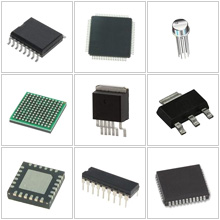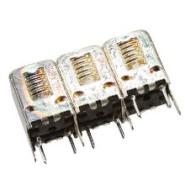As I understand it, the ideal frequency response for a filter is that we want maximum gain in pass band, a vertical or instant cutoff and 0 in the stop band, however this is ideal and can never be achieved in real life.


Along came Butterworth and found a relationship / formula for choosing the right combination of inductors and capacitors to be able to create filters that matched a certain spec and resembled the frequency response that we want - but not ideal.
With the exact same filter structure along came Chebyshev and he worked out an even better formula to get an even tighter / more tuned relationship to give us a filter that was closer to idea than Butterworths relationship, for example a much more steeper transition band than the same design using Butterworths.
Then again, along came Cauer with his own method of calculating the relationships and values needed to get an even better and closer approximation to an idea filter. With the steepest transition yet.
With all these, they haven't discovered a new "structure" or found that by making a different connection you get a better filter, but instead each one devised a better and more accurate formula for choosing the values of your components to get your filter close and closer to ideal.
So my question is this.
Lets say we are dealing with a 5 order low pass filter. (The type doesn't really matter). With Butterworth we have a good filter, then still using a 5th order and same structure Chebyshev was able to "tune" it even more to create and even better response, and then the same with Cauer.
Now if I was to take my 5th order structure and was able to simulate for every possible inductor value and capacitor value would I find a combination that would give me the best possible / closest model to ideal, that beats all previously known filter types?
And then when someone is able to devise or work out a relationship linking all these values together and with the spec thats required it would then be a classified its own filter type such as Butterworth etc?
My second question is then,
Do mathematicians / engineers know of a "best" filter response that is physically possible for a given order but so far do not know how to create it.
Similar to saying, if NP = P was proven it would mean we know for sure that there are solution to the problems but we haven't worked out yet how to get there / havnt worked out an algorithm for it. (Sorry if thats a bad example or its wrong but its the best analogy I can think of for now)
PS: the filters I got was bought from http://www.kynix.com/Parts/2686543/5487BP15C675.html.


Along came Butterworth and found a relationship / formula for choosing the right combination of inductors and capacitors to be able to create filters that matched a certain spec and resembled the frequency response that we want - but not ideal.
With the exact same filter structure along came Chebyshev and he worked out an even better formula to get an even tighter / more tuned relationship to give us a filter that was closer to idea than Butterworths relationship, for example a much more steeper transition band than the same design using Butterworths.
Then again, along came Cauer with his own method of calculating the relationships and values needed to get an even better and closer approximation to an idea filter. With the steepest transition yet.
With all these, they haven't discovered a new "structure" or found that by making a different connection you get a better filter, but instead each one devised a better and more accurate formula for choosing the values of your components to get your filter close and closer to ideal.
So my question is this.
Lets say we are dealing with a 5 order low pass filter. (The type doesn't really matter). With Butterworth we have a good filter, then still using a 5th order and same structure Chebyshev was able to "tune" it even more to create and even better response, and then the same with Cauer.
Now if I was to take my 5th order structure and was able to simulate for every possible inductor value and capacitor value would I find a combination that would give me the best possible / closest model to ideal, that beats all previously known filter types?
And then when someone is able to devise or work out a relationship linking all these values together and with the spec thats required it would then be a classified its own filter type such as Butterworth etc?
My second question is then,
Do mathematicians / engineers know of a "best" filter response that is physically possible for a given order but so far do not know how to create it.
Similar to saying, if NP = P was proven it would mean we know for sure that there are solution to the problems but we haven't worked out yet how to get there / havnt worked out an algorithm for it. (Sorry if thats a bad example or its wrong but its the best analogy I can think of for now)
PS: the filters I got was bought from http://www.kynix.com/Parts/2686543/5487BP15C675.html.
















![Electronics Soldering Iron Kit, [Upgraded] Soldering Iron 110V 90W LCD Digital Portable Soldering Kit 180-480℃(356-896℉), Welding Tool with ON/OFF Switch, Auto-sleep, Thermostatic Design](https://m.media-amazon.com/images/I/41gRDnlyfJS._SL500_.jpg)















